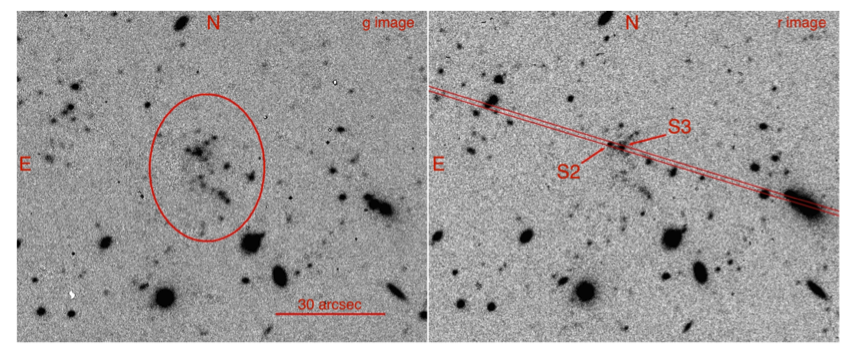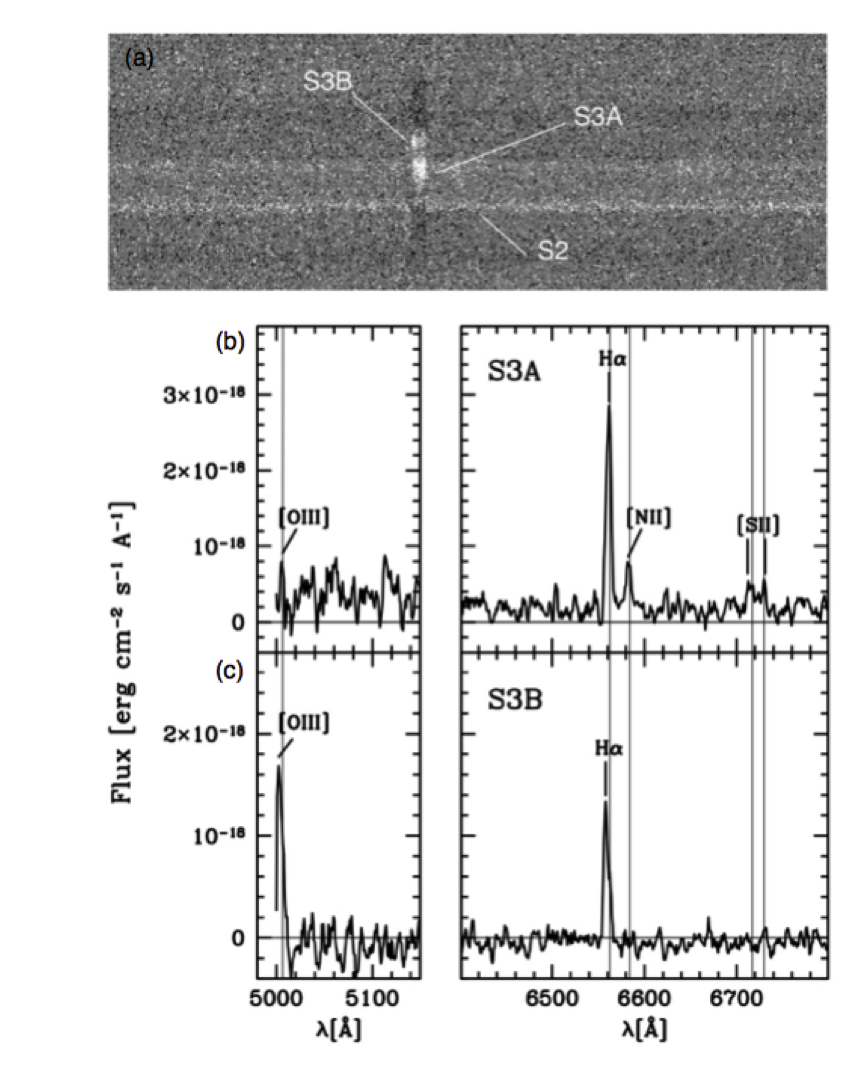SECCO1: an "almost-dark" dwarf galaxy
Models of galaxy formation and evolution within the Λ-CDM paradigm can be tested against their predictions on the number and properties of dwarf galaxies and in particular stellar systems highly dominated by dark matter. However finding such small structures has proved extremely difficult even within the Local Volume, resulting in an incomplete census of dwarf galaxies. Moreover, stellar systems recently discovered by photometric surveys such as the Sloan Digital Sky Survey, the PAndAS survey and the PanSTARRS survey show a wider range of properties with respect to those known so far, in particular they are fainter and poorer in metals.
Novel techniques have to be developed in order to explore a larger parameter space and discover new dwarf galaxies. Searching for the stellar counterparts of Ultra Compact High Velocity Clouds (UCHVC) represent a promising approach that already resulted in the discovery of the Leo P dwarf galaxy (Giovanelli et al 2013).
This is the idea behind the SECCO survey (Bellazzini et al 2014), led by Michele Bellazzini from the Bologna Astronomical Observatory and involving several scientists from INAF, including Laura Magrini and Eleonora Sani from the Arcetri Astrophysical Observatory, from France, USA, Chile and Spain. The survey aims at searching for stellar counterparts in 25 UCHVC selected from the ALFALFA HI survey database by Adams et al (2013) as good candidates to be faint (or even star-less) dwarf galaxies associated with low-mass dark matter halos, in the distance range 0.25 Mpc ≤ D ≤ 2.0 Mpc.
The results of the spectroscopic follow-up of one candidate, SECCO1, have been recently presented in the paper “HII regions within a compact high velocity cloud. A nearly star-less dwarf galaxy?” by Michele Bellazzini, Laura Magrini and others (ApJ Letters, 2015). The candidate is located just ∼30′′apart from the center of the HVC 274.68 +74.70-123. Two components (S2 and S3, see Fig. 1) were observed with the spectrograph MODS1 on the LBT. The spectra reveal the stellar continuum (except for the component S3B) and several emission lines (see Fig. 2). The radial velocity of the complex S3 is −77 ± 42 km s−1, compatible with the velocity of the associated UCHVC (Vh = −128 ± 6 km s−1), implying that at the center of HVC274.68+74.70-123 there is indeed a stellar counterpart, with ongoing star formation.
 |
| Figure 1: Deep g (left panel) and r (right panel) images zoomed on the candidate stellar counterpart of the UCHVC (whose half-flux size is 4'x5', much larger than the size of this image). In the right panel the two sources (S2 and S3) for which spectra have been obtained with MODS1 are indicated. |
A few alternative hypotheses about the nature of SECCO1 are discussed in the paper: i) a cloud with ongoing star formation located in the Galactic Halo; ii) a chance superposition of the HVC ionized by radiation from massive stars in the Galactic disk with background unrelated sources, and finally iii) a faint dwarf galaxy, where a few clumps of star forming regions are enclosed within a comparatively huge HI cloud. The authors argue that the third possibility is the most likely one and hence SECCO1 would be a new faint dwarf galaxy residing in the Virgo cluster of galaxies. It lies, indeed, at just 2.44◦from the center of the cluster and has a velocity well within the range spanned by cluster members.
If SECCO 1 were indeed a dwarf galaxy, it would be an extremely gas-dominated and star-poor one, akin to the isolated “almost dark” dwarf galaxies discussed by Cannon et al. (2014). The ratio of the HI mass to the optical luminosity of SECCO1 is very high, about 20 in solar units. Systems with such ratio are quite rare and may constitute the tip of the iceberg of a population of completely dark mini-haloes that is predicted to exist by the Λ-CDM cosmological model.
 |
Figure 2: Panel (a): A portion of the combined 2D spectra around the wavelength of rest-frame Hα. The spectra are labeled after the associated sources. Note the lack of stellar continuum for S3B. Panels (b) and (c): Remarkable portions of 1D spectra of S3A and S3B. The emission lines that have been identified are labeled and marked with thin vertical lines. |
Edited by Anna Gallazzi



